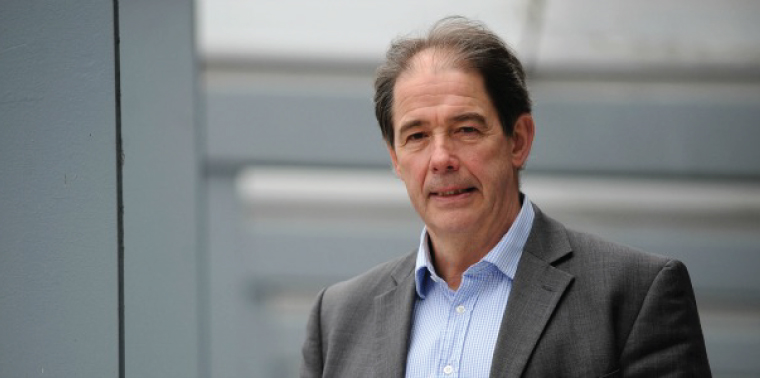Britain's Atomic Weapons Establishment (AWE) has been at the heart of the UK nuclear weapons programme for decades – and therefore, by default, at the heart of the UK’s entire defence establishment. As the laboratory where the UK's Trident nuclear weapons are built and maintained it is a national centre of technical and scientific expertise, a major contributor to the regional economy, and a powerful player in military decision-making behind the scenes in Whitehall.
Today Parliament will vote on the future of the UK Trident nuclear weapons programme – a debate which is certain to rumble on to the next election and beyond. Yet Parliament has only a partial influence on decisions taken regarding AWE’s strategy and priorities. These decisions are tightly controlled by government, and AWE's work – along with much of the substance of the UK's nuclear weapons programme – is exempted from even rudimentary scrutiny by Parliament. AWE's current programme, for instance, is focussed on a limited decommissioning programme (to help meet a commitment under the Strategic Defence and Security Review to reduce the size of the UK’s warhead stockpile), but also on a much bigger modification programme to upgrade the UK’s Trident warheads. As yet, Parliament has not even been notified of this part of AWE’s work – even though a staggering £1 billion is currently being spent every year to fund the Establishment.
Extraordinarily, a significant element in this programme is to ensure that the UK will still be able to ‘sit at the top table’ (through its notionally ‘independent’ nuclear weapons capability) well into the second half of the century. Say what you like about chronic short-termism at the heart of the UK’s political systems: when it comes to matters nuclear (both military and civilian), the establishment displays a commitment to long-term planning and investment that is the envy of every other government department.
And all this prioritised investment continues in the tragically anachronistic belief that the best way of protecting our national security is by hanging on – at literally any cost – to the once reassuring notion of an independent nuclear deterrent. For many in our political and defence establishment, this has now become ‘an article of faith’, placing it entirely outside of any rational, science-based analysis of what we really need to be doing to protect our security as a nation.
But that may, at long last, be changing. Whatever people may feel about the election of Jeremy Corbyn as Leader of the Labour Party, this has galvanised (and legitimised) the debate about our nuclear deterrent in a way that seemed all but impossible before then, with the UK’s three major parties all seemingly ‘as one’ on the question of Trident renewal.
As a direct consequence of that debate – and the now serious possibility that the Trident programme may be further postponed, modified or even cancelled – the future of industrial sites such as AWE which rely on Trident is now a matter of lively discussion. With the jobs of nearly 5,000 highly-qualified people at stake at AWE alone, I was delighted when I heard that the Nuclear Information Service (of which I’m proud to be a Patron) had decided to examine in detail the prospects for AWE in the event of the Trident programme being cancelled.
The study report argues convincingly that the closure of AWE (even in what would be seen by many as terminally threatening conditions for the continued existence of the organisation) is highly unlikely. Dismantling of the existing warhead stockpile is expected to take at least four years, guaranteeing work over the short to medium term. Decommissioning of radioactively contaminated facilities is likely to last into the 2040s/50s, with a need to hold radioactive waste securely at the site until at least 2070. Work at AWE on disarmament verification and nuclear forensics might be expected to continue regardless of the future of the Trident programme.
In the long term, the report argues that the former AWE, with its skills base in the much-needed Science, Technology, Engineering, and Mathematics disciplines, is well placed to move in to new civilian sector high technology manufacturing markets. A comparison with what happened at the former civil nuclear research site at Harwell, and at the military chemical and biological facilities at Porton Down, is particularly instructive. Both sites have been converted to a number of commercially viable enterprises undertaking a diverse range of work, with a core remaining in the public sector to manage legacy issues and undertake work which should rightly be conducted by government.
AWE’s position would be even stronger in that regard. With a nuclear weapons legacy stretching back over 65 years, there are now literally innumerable swords (many defunct, but many still in active service) that have still to be beaten into ploughshares.
We should pay tribute to the extraordinary skills and expertise of AWE’s core staff and supporting consultants. This is an international asset that the UK would be well-advised to value and nurture, even if (or, as I would argue, when) we, as a nation have decided once and for all to put our national security first by getting rid of our Trident submarines and their warheads. Continuing investment in science and technology will be crucial to the future success of the UK’s economy, and the more we can do to match the research and development at AWE to meet civil sector needs, the better.

